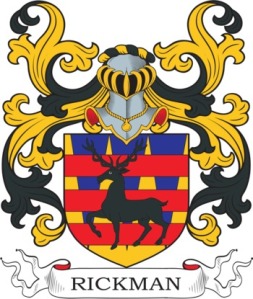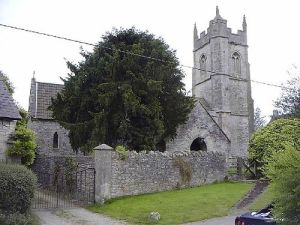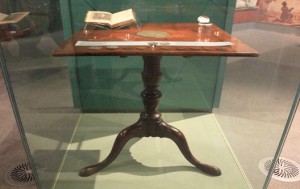As it’s UK Census day today, I’m re-publishing this from four years ago.
We’ve been clearing out cupboards, and this cutting from The Times from 11th May 1961 was in a book, in a tea chest full of papers, letters, and photographs. It’s a companion piece to the post about Thomas “Clio” Rickman from July that year. John Rickman is a very distant cousin, probably something like a seventh cousin seven times removed. The details are here
MAN BEHIND THE SCENES FRIEND OF LAMB WHO SUGGESTED
AND CONDUCTED THE FIRST CENSUS
BY ORLO WILLIAMS

Characteristically, in death as in life, he has kept out of the headlines. I had waited to see whether he would be remembered when the census was being taken, but he was not. And yet he does deserve to be given his share of honour. I refer to John Rickman, As a quite unknown young man in 1796 he wrote an article on ” The Utility and Facility of a general Enumeration of the People of the British Empire”. This led to the founding of the fortunes of his remarkable back-room career. Abbot (who as a member of Parliament fought for the census) took Rickman on as his secretary and when, in 1802, he was elected Speaker the connexion continued. Rickman. was given a house in the precincts. He died, being then Clerk Assistant in 1841. [Entertainingly, given that Orlo Williams was Rickman’s biographer, the date in the article was wrong. John Rickman died on the 11th August 1840]
REVOLUTIONARY YOUNG MEN
There is a good deal to be said about Rickman’s purely parliamentary life. But for this story, some of which I discovered in the unpublished portions of Lord Colchester’s diaries, now in the Public Record Office, I must refer readers to my book on The Clerical Organization of the House of Commons, 1661-1850 (Clarendon Press, 1954). It is a much earlier work of mine. The Life and Letters of John Rickman (Constable, 1912), to which l must refer them for the full statement of Rickman’s connexion, which was lifelong, with the census and of his career, character and friendships (with Robert Southey, Lamb, Coleridge, George Dyer, Telford, Hazlitt, Crabb Robinson and the Burneys).
The correspondence between Rickman and Southey lasted from their first acquaintance, made in 1795, as revolutionary anti- governmental young men till 1839 when they were both Passionate Tories and Rickman had been assisting Southey in composing a series of dialogues never published to counteract what Rickman called ” Mobocracy “ and oppose the first Reform Bill.
It is in one of his early letters (December 27, 1800) that Rickman makes a definite statement regarding his connexion with the first Population Act and the first census. It comes at the end of the letter, which comments on many things~-Southey’s poem Thalaba, George Dyer’s- extraordinary. foibles and the high price of food. Finally Rickman, who was not yet in Abbot’s employ, wrote:- –
ENERGY AND JUDGMENT
“I have another occupation offered me…. At my suggestion, they have passed an Act of Parliament for ascertaining the population of Great. Britain, and as a compliment (of course) have proposed to me to superintend the execution of it…. I suspect all this attention-(it is more immediately -from G. Rose) is intended as a decent bribe: which I shall reject, by doing the business well, and taking no more remuneration, than I judge exactly adequate to the trouble. It is a task, of national benefit, and I should be fanciful to reject it because offered by rogues. As they well know me for their foe, I cannot suspect them of magnanimity enough to notice me with any good intention. At all events, I shall go strait forward ”

This passage illustrates two sides of Rickman’s character, his energy in undertaking any labour involving the public good and his peremptory judgments of all politicians whose policies he either rejected or despised. His letters to Southey are peppered with similar judgments. For instance, “Pitt had genius without acquired knowledge: whence his affectation of infallibility and all the woes of Europe “. Again: “Charley Fox eats his former opinions daily, and even ostentatiously, showing himself the worst man but the better Minister of a corrupt Government, where three people in four must be rogues and three deeds in four bad”; or, after a joyful account of the Regent’s rebuff to Grenville and Grey in 1811, ” the pangs of the M. Chronicle are delicious. Canting Villain ! “ and his description of Lord John Russell’s first speech on the Reform Bill: “the backing Speech of the Tricolor Donkey Lord was truly asinine.”
MASTERLY- ” ABSTRACT”
However, he was mistaken in his suspicions of a bribe in I800, for it was Abbot who suggested to Rose that Rickman should be offered the superintendence of the returns; and also un-foreseeing in supposing that it would be a short-term activity. As events turned out he did the work of the Registrar-General’s Office of today on the censuses of 1801, 1811, 1821 and 1831. published a masterly “Abstract of Returns” in 1833,and in the last year of his life was working on returns of births, deaths ,and marriages from 1570 to 1750 to be prefaced to the census return of 1841. Moreover, in that year, in a letter to the Home Office defending himself against an anonymous attack, he showed that, though he received on an average 500 guineas for each return, out of which he had to defray in advance all working expenses for clerks, &c., he was actually a financial loser. In fact, he had no recognition. from any Government for his statistical labours, though he was elected F.R.S. in 1815.
John Rickman abhorred publicity. and despised self-advertisement; ho sought no rewards but from his conscience. His name has not resounded through the ages. Yet to the army of Lamb-lovers he is immortal as a friend of Elia [Elia was Charles Lamb’s pen name in the London Magazine]. Lamb’s letter to Manning of November 3, 1800, describing his new acquisition of a ” pleasant hand”, his neighbour in Southampton Buildings, is famous; and it is balanced by a letter from Rickman to Southey a month later in which he remarks on his pleasant neighbour opposite, who “laughs as much is I wish, and makes even puns, without remorse of conscience”.
NEAR STARVATION
Equally famous is Lamb’s letter to Rickman of November, 1801, inimitably re- counting George Dyer’s visit to him when almost expiring from starvation. Rickman sent this letter from Ireland to Southey, ” a letter from Lamb of exquisite perhaps un- paralleled description “, and with it that rarity, a letter from Dyer himself to Southey describing his sickness and typically deploring his disability to assist that conceited, dilatory, hopeless but not un- gifted- creature George Burnett, Lamb’s “ George II “, whom Rickman tried vainly to employ and. to convict of his own stupidity. Then Coleridge, too, was Rickman’s friend and admirer. He wrote to him in 1804: ” All your habits of action and feeing, your whole code of self-government – would to God I could but imitate them as entirely as I approve of them! ” And in another letter of 1811 he made.some extremely interesting comments on Lamb’s too convivial habits, notably of “the unconquerable appetite. for spirit (that) comes in with the tobacco “ .These early friendships died, as did their objects: it is sad to record that Southey and Rickman made to one another cold and pitying comments on Lamb’s death in 1835.






